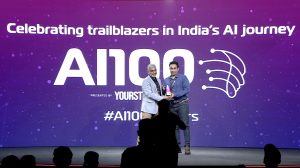The pandemic forced us to rethink how we work, communicate, and collaborate with one another. Six months into the lockdown, we initiated groundwork on becoming a remote-first organization. We didn’t know when the pandemic would end, but we knew the workplace would never be the same.
I joined CACTUS in July 2021 to help it transition to a remote-first setup, and in the last few months, we have made concerted efforts to factor in opinions from Cactizens spread across 14 countries before drafting the remote-work policy and guidelines. I have to say helping a global company like CACTUS has been exciting—and not without challenges. But the feedback we have received from Cactizens has been encouraging and we will continue to support Cactizens embrace this change fully.
As a first step toward developing a remote-first model, we surveyed employees to better understand work preferences and current challenges. We found that an overwhelming majority of employees wanted flexibility in how and where they worked, with some wanting fulltime remote work. A core team then benchmarked other remote-first companies and spoke with industry thought leaders to learn best practices. Several pilots were conducted to gain insight on what practices would work best for the company.
Although CACTUS will still maintain its company offices, the company will no longer be office-centric. Employees will not be required to live near the office and even those that live near a company location will have the flexibility to choose whether they want to work from the office.
We have to remind ourselves that working remotely during the pandemic is much different than working remotely after the pandemic. There will be more options and flexibility in the future. However, we need everyone in the company to have the mindset of a remote worker and learn to work with colleagues who may be working from a different location and a different time-zone. Embracing remote-first means we will have to evolve our culture and adapt our work practices.
In the next year, we will focus on adapting policies, processes, and training to better suit a remote context. At a team and department level, leaders can leverage the learning from the previous remote pilots while experimenting with new techniques or technology to improve collaboration and communication.
We look forward to the continued support of everyone associated with CACTUS.
You can learn more about remote-first at CACTUS here: https://cactusglobal.com/careers/remote-first
– Jason Morwick, Head, Remote-first
Some words from the leadership at CACTUS
“While the world was forced into an 18-month experiment with remote work, we’ve been thinking about embracing remote-first for a long time. Our primary reason behind adoption of a remote-first culture is our evolution as a global company. When too many people are concentrated in a specific office location, the loudest voices are the ones closest to you. With customers in over 160 countries, we want to be close to them and responsive to their needs. We also want all employees across the globe to equally contribute to the direction of the company. We are not trying to do the same old things from a distance. We need to rethink and reinvent how we work together. In the end, moving to remote-first will give our people greater freedom, flexibility, and a chance to re-imagine our lives.” — Abhishek Goel, CEO and Co-founder
“Going remote-first opens us up to a global talent pool. We are no longer restricted to a specific geographic location. We can provide opportunities to wherever we can find the right talent. In fact, over half of the people we hired since the pandemic began, are not near a CACTUS office. They are dispersed across 14 countries and 165 different cities.” — Yashmi Pujara, Chief Human Resources Officer









